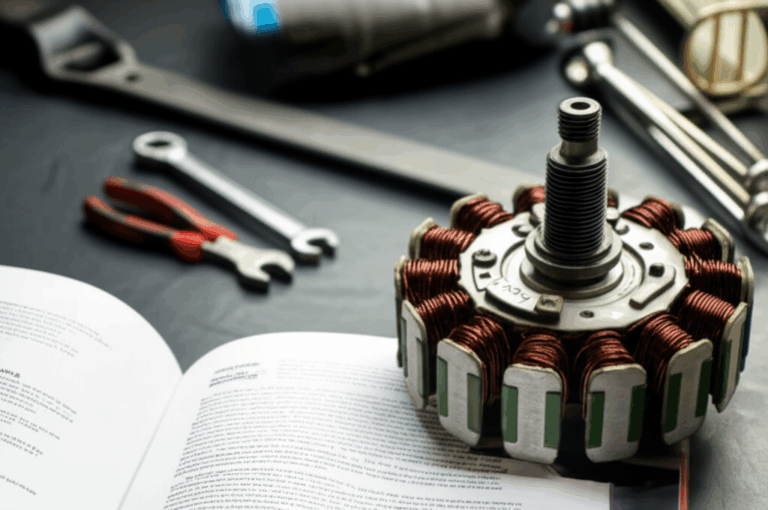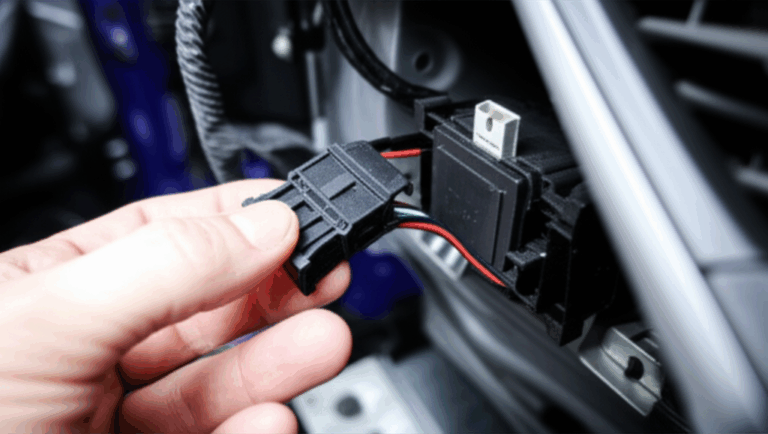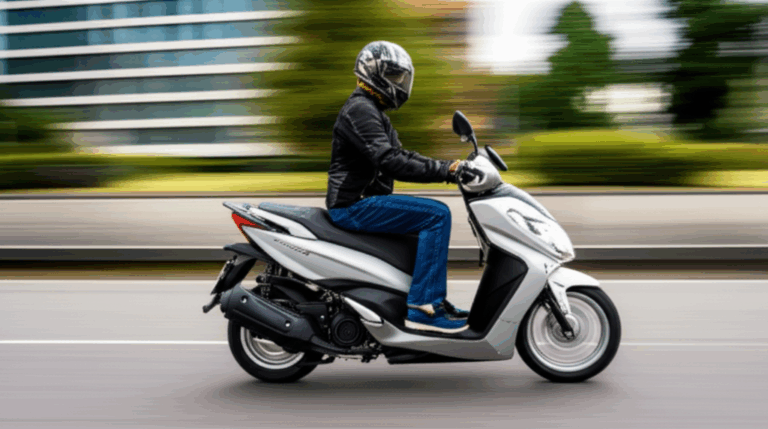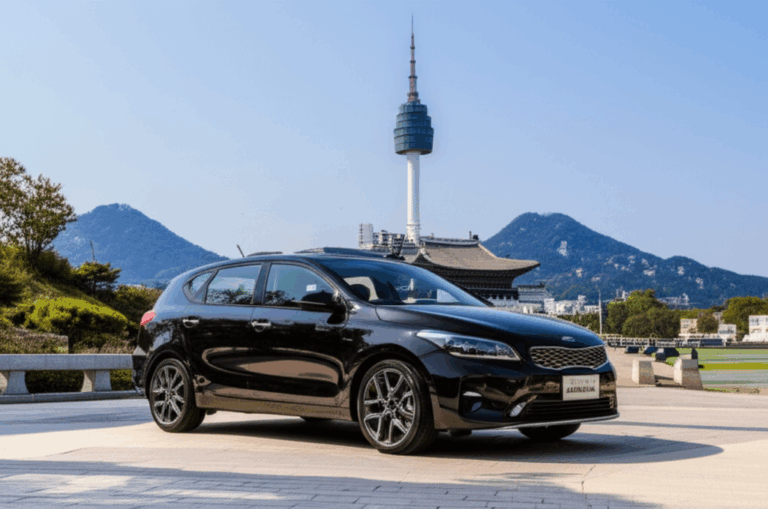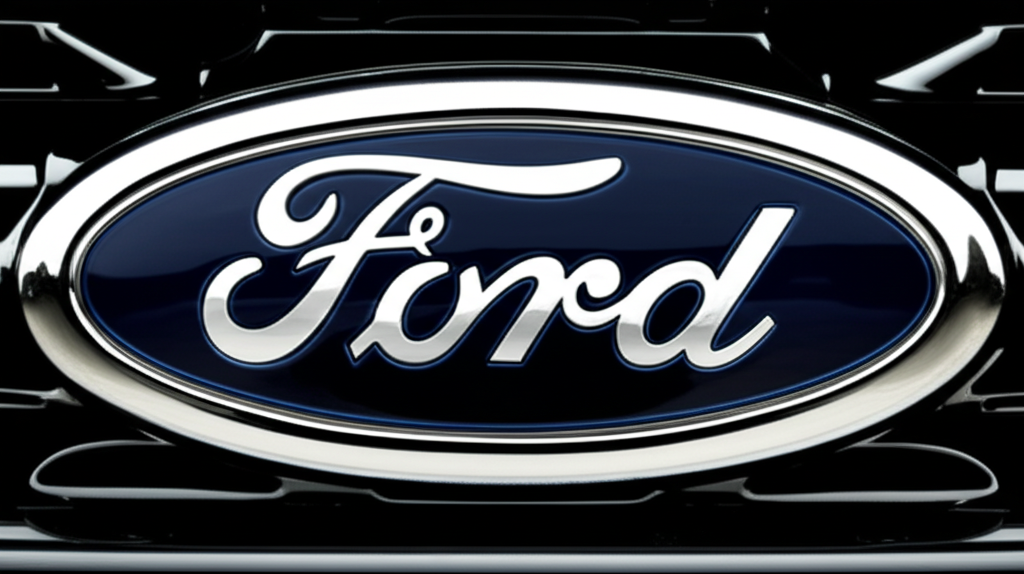
Does Ford Own Range Rover? Unpacking Land Rover’s Complex Ownership History
Table of Contents
- Does Ford Own Range Rover? Unpacking Land Rover’s Complex Ownership History
- The Short Answer: Who Owns Range Rover Today?
- How Did Land Rover Begin? The Early British Roots
- What Happened In The BMW Era?
- What Did Ford Do As Owner? The Premier Automotive Group Years
- Why Did Ford Sell Land Rover (and Jaguar)?
- Who Owns Land Rover And Range Rover Now?
- Where Are Range Rovers Made Today?
- Key Milestones: A Simple Ownership Timeline
- Does Ownership Change Brand Identity Or Quality?
- What Does Ford Motor Company Own Today?
- FAQs About Range Rover Ownership And History
- References
- Bottom Line: Fast Facts You Can Trust
Here is the clear answer in plain words. Ford does not own Range Rover today. It did own Land Rover, which includes Range Rover, for a time. That time ended in 2008. Today Tata Motors owns Jaguar Land Rover (JLR). Why should you read on? Because brand history can feel like a maze. You might buy a car soon. You want the facts on ownership, quality, and the future. I will show you the path, step by step.
Problem: People mix past and present. They ask if Ford still owns Range Rover. That confusion can hurt trust and even delay a buying choice.
Agitate: You deserve a straight answer. You also want to know how ownership shapes models, tech, service, and value. If you guess, you risk a poor choice. That is no fun.
Solution: I give you a crisp timeline, simple charts, and short stories. You get the clear truth on Ford, BMW, Tata Motors, and JLR. You see how each era helped the Range Rover you see today.
The Short Answer: Who Owns Range Rover Today?
No. Ford Motor Company does not own Range Rover. Tata Motors owns both Land Rover and Jaguar under the company Jaguar Land Rover (JLR). Tata bought them in 2008. The deal price was about US$2.3 billion. During Ford’s time, Land Rover sat inside Ford’s Premier Automotive Group (PAG) with Jaguar, Volvo Cars, and Aston Martin Lagonda.
I remember the day Tata announced the deal. The news ran across BBC, Reuters, Bloomberg, The Wall Street Journal, and Automotive News. The headline felt big. A new chapter began. The world watched because the 2008 global recession sat like a heavy cloud over the auto world.
How Did Land Rover Begin? The Early British Roots
Land Rover started in 1948 under the Rover Company. The first Land Rover looked tough and simple. Farmers loved it. Soldiers used it. Over time the brand sat within larger British groups like British Leyland. The plant in Solihull became home base. The badge stood for British grit.
Through the years the Rover Group moved and merged. The brand shifted between owners. This is common in the automotive conglomerate world. Names change at the top. The core idea stays the same. Strong 4x4s. Go anywhere. Come back again.
What Happened In The BMW Era?
In 1994, BMW AG bought the Rover Group from British Aerospace. BMW invested in tech and design. It helped shape the third-generation Range Rover. That model pushed luxury SUVs to a new level. BMW’s work improved engines, platforms, and parts. It also fostered cross-brand collaborations.
Still, by 2000, BMW chose to sell Land Rover. Reasons included cost, complex UK operations, and a need to focus. BMW kept the MINI brand. It sold Land Rover to Ford for about £1.85 billion (US$2.75 billion). This change set up the Ford era.
What Did Ford Do As Owner? The Premier Automotive Group Years
Ford acquired Land Rover in 2000. It put Land Rover in PAG with Jaguar, Volvo Cars, and Aston Martin Lagonda. Ford aimed to build a strong luxury portfolio. It wanted to rival other global presence of luxury brands like Daimler AG, Volkswagen Group, and General Motors.
Under Ford, Land Rover gained money for product development and brand growth. Ford pushed platform sharing among brands, supplier relationship management, and operational efficiency improvements. We saw updates to Discovery, Freelander, and the birth of Range Rover Sport. Ford also owned Jaguar at the same time. This helped share engines and parts. For example, you may hear about Ford-built V8s in some JLR models from that era.
Yet the Premier Automotive Group struggled with financial performance. Ford had to balance heavy costs and a shifting SUV market. Fuel prices rose. The luxury vehicle sales data bounced. The seeds of change were in the wind.
Why Did Ford Sell Land Rover (and Jaguar)?
You can sum it up in three points.
- Focus on core business: Ford wanted to center on Ford and Lincoln. It needed a tighter business strategy as markets changed.
- Financial pressures: PAG cost a lot. The group posted losses over time. Ford faced pressure to improve shareholder value creation.
- 2008 crisis: The Global recession 2008 hit hard. Credit dried up. The auto market shook. An asset sale felt like the right move.
In 2007, Ford sold a majority stake in Aston Martin. In 2008, Ford sold Jaguar and Land Rover to Tata Motors. Ford’s Alan Mulally led a plan to survive and reset. That plan worked. It kept Ford stable.
Who Owns Land Rover And Range Rover Now?
Today the owner is Tata Motors. It runs Jaguar Land Rover (JLR). Ratan Tata backed the deal with a long view. Tata kept British design and kept plants in the United Kingdom. It invested in engineering centers in Gaydon and Whitley, and in plants like Solihull, Halewood, and Castle Bromwich.
Under Tata, JLR launched hits like Range Rover Evoque, new Range Rover Sport, new Discovery, and the reborn Defender. JLR also grew in emerging markets auto sales in the Asia-Pacific automotive market, the European luxury car market, and the North American SUV market. Tata funded big R&D and a bold innovation roadmap. The goal was clear. Raise brand equity, build customer loyalty programs, and support a strong after-sales service network and dealership network expansion.
Where Are Range Rovers Made Today?
JLR builds many models in the UK. Solihull makes Range Rover and Range Rover Sport. Halewood built the Evoque and Discovery Sport. JLR also set up some overseas plants to serve local demand. The brand stays British in design and spirit. It carries Indian ownership through Tata Motors.
Is Land Rover British owned today? The company is British in design, engineering, and heritage. Ownership sits with an Indian parent. So the answer is yes in identity and no in legal parentage. Both can be true at once. The brand identity evolution kept the heart of the badge.
Key Milestones: A Simple Ownership Timeline
Here is a fast path through the years.
| Date | Owner / Event | Details |
|---|---|---|
| 1948 | Rover Company | Land Rover model launches. British roots begin. |
| 1970 | Range Rover | The Range Rover nameplate arrives. |
| 1994 | BMW AG | BMW buys Rover Group for about £800 million. Investment in tech and new models starts. |
| 2000 | Ford Motor Company | Ford buys Land Rover from BMW for about £1.85 billion (US$2.75 billion). Land Rover joins PAG with Jaguar, Volvo Cars, Aston Martin. |
| 2007 | Aston Martin sale | Ford sells a majority stake in Aston Martin. |
| March 26, 2008 | Tata Motors | Tata buys Jaguar and Land Rover for about US$2.3 billion. Deal covers brands, IP, plants, and networks. |
| 2010s | Growth | JLR sales rise. New models launch. Brand expands in key markets. |
| 2021 | “Reimagine” | JLR announces Reimagine strategy under CEO Thierry Bolloré. Focus on electrification, sustainability, and modern luxury. |
You can see the handoffs in a clean line. This table makes announcement of sale and completion of sale easy to spot.
Does Ownership Change Brand Identity Or Quality?
Many shoppers ask this. I get it. Ownership can shape manufacturing facility ownership, design and engineering centers, and supply chain resilience. I look at a few key areas.
- Investment: Tata put billions into JLR. It funded new model introductions, stunning design, and better tech. It grew global brand footprint and pushed sustainable manufacturing practices.
- Tech and engines: JLR built the Ingenium engine family. It set electric vehicle plans for Range Rover and hybrid models Range Rover. These moves respond to environmental regulations for SUVs across many regions.
- Brand value: Third parties watch all this. Groups like J.D. Power and S&P Global track quality and data. Media like Reuters, Bloomberg, The Wall Street Journal, and Automotive News report on results. Over time buyers judge with their wallets.
Let me share a note on EVs and motors. Modern EVs need precise parts. For example, motor performance depends a lot on the quality of the electrical steel laminations. Inside the motor you find parts such as the stator core lamination and the rotor core lamination. Good motor core laminations help reduce losses and heat. This matters as JLR moves to more hybrids and full EVs. Strong parts support smooth power and long range.
Does the past Ford era help today? In some ways yes. Ford and JLR shared some engines and know-how. That formed a bridge as JLR moved to technological advancements in JLR and then to its own Ingenium powertrains. Later JLR set its own supplier relationship management to suit its future.
What Does Ford Motor Company Own Today?
Ford kept its focus on two key brands. Ford and Lincoln. It also builds clear global operations around trucks and SUVs. Think Ford F-150 or Ford Explorer. Ford has worked on brand restructuring and kept an eye on global automotive market trends. It partners when it makes sense. It trims when it must. You can call this brand divestment strategy when it sells non-core parts of the business.
People also ask about past brands. Ford had Mercury which is now defunct. It held stakes in Volvo Cars and Aston Martin Lagonda in the past. It once grouped luxury brands in PAG. That era is over.
FAQs About Range Rover Ownership And History
- Who owns Land Rover and Range Rover today?
- Tata Motors owns them under Jaguar Land Rover (JLR).
- Is Land Rover a British company?
- Yes in design, engineering, and heritage. The parent company is Indian. The base sits in the United Kingdom with sites like Gaydon, Whitley, Solihull, Halewood, and Castle Bromwich.
- Did Ford ever own Jaguar?
- Yes. Ford owned Jaguar and Land Rover at the same time inside PAG.
- What was Ford’s Premier Automotive Group?
- PAG grouped luxury brands. It included Jaguar, Land Rover, Volvo Cars, and Aston Martin Lagonda. It aimed to share tech, raise quality, and cut costs.
- Where are Range Rovers made today?
- Mostly in the UK with some global production to serve local markets. JLR runs a strong after-sales service network and dealership network expansion worldwide.
- What models sit under Land Rover and Range Rover?
- Range Rover, Range Rover Sport, Range Rover Evoque, Discovery, Discovery Sport, and Defender. Jaguar models include XF, XJ in the past, F-Pace, and F-Type.
- Why do people care about ownership?
- Ownership shapes corporate financial performance, long-term investment strategy, and brand repositioning. It can change marketing campaigns JLR and future plans.
References
- Ford press releases and annual reports
- Tata Motors press releases and investor updates
- JLR corporate statements and annual reports
- UK government reports on automotive investment
- Media coverage: BBC, Reuters, Bloomberg, The Wall Street Journal, Automotive News
- Analyst notes from S&P Global
- Industry studies from J.D. Power
These sources reviewed key facts like the acquisition deal value, the announcement of sale, the completion of sale, and the context of the 2008 Financial Crisis.
Deeper Dive: Strategy, Markets, And The Road Ahead
Let’s look at the big picture. This helps if you track stocks or work in the trade.
- Strategy and focus: After the sale, Ford aimed at core strength. Trucks, SUVs, and a clear business strategy. It looked at annual financial reports and acted on what the numbers said. It cut risk. It lifted margins. This is classic shareholder value creation.
- Tata’s playbook: Tata used an investment strategy to grow brand equity. It guided brand expansion strategies, planned new model introductions, and set an automotive innovation roadmap. It backed sustainable manufacturing practices to meet environmental regulations for SUVs.
- Market reach: JLR spread across the European luxury car market, the North American SUV market, and the Asia-Pacific automotive market. It added reach in emerging markets auto sales. That widened the global brand footprint.
I also watch regulatory approvals for sales and how they affect timing. In 2008, approvals were done in a tight time frame. That speed mattered because the 2008 Financial Crisis stressed cash and made deals harder.
Case Notes: Models, Engines, And Tech
- Models: Under Tata, JLR hit it big with the Evoque. The Range Rover Sport refined the sweet spot between luxury and speed. The Defender came back strong with modern bones and old-school charm. The Discovery line kept family duty in mind.
- Engines and platforms: JLR built the Ingenium engine family. It moved away from older Ford engine supply. This shift gave JLR control over design and engineering centers and pushed operational efficiency improvements.
- EVs and hybrids: JLR set plans for more hybrid models Range Rover and electric vehicle plans for Range Rover. In 2021, the Reimagine plan aimed at a cleaner line up. The move fits a world with tighter rules and buyers who want green tech.
Quality markers include third party scores and brand value assessment. Surveys by firms like J.D. Power give a view. Media like Automotive News track trends. Over time the consumer perception of ownership changes tends to settle when the cars perform well and the after-sales service network stays strong.
Related Players And Past Bids
You may have heard other names tied to Land Rover or Jaguar over the years. Reports and rumors have mentioned firms like Magna International and Mahindra & Mahindra. The auto world is full of calls and talks. Big deals need cash and nerve. They also need a clear fit. In 2008, Tata Motors won the bid and closed.
Other global players such as Daimler AG, Volkswagen Group, and General Motors shape the luxury scene too. They influence market competition analysis and spark global automotive market trends. Brands watch each other. They adjust fast to keep up.
Quick Look: Britishness, Identity, And Pride
Is Range Rover still British? Yes in style, craft, and base. Engineers work in Whitley and Gaydon. The flagship plant in Solihull remains iconic. The parent is Indian. That does not wash away the roots. It blends two strengths. British design meets Indian long-term backing. That mix gave JLR the room to grow.
When I walk a plant floor I see it in the details. The leather. The trim. The stance of the SUV. The badge says Range Rover. The spirit feels the same as it did decades ago.
PAS Recap: Problem, Agitate, Solution
- Problem: You need to know who owns Range Rover now. You want a clean timeline. You want to buy with confidence.
- Agitate: Wrong info can shake trust. It can cloud choices on service, parts, and resale. You do not need that.
- Solution: Use this guide. It shows dates, deals, and people. It tells you how Ford, BMW, and Tata Motors shaped Land Rover and Range Rover. It points you to the future with EVs, hybrids, and smart supply chain resilience.
Bottom Line: Fast Facts You Can Trust
- Ford does not own Range Rover today. Tata Motors owns Jaguar Land Rover (JLR).
- Ford owned Land Rover from 2000 to 2008 within Premier Automotive Group (PAG).
- Tata bought Jaguar and Land Rover in 2008 for about US$2.3 billion.
- JLR designs and builds in the United Kingdom. Key sites include Solihull, Halewood, Castle Bromwich, Whitley, and Gaydon.
- JLR grew with models like Range Rover Evoque, Range Rover Sport, Discovery, and Defender.
- The future points to hybrid models and full EVs under the Reimagine plan.
- Ford now focuses on Ford and Lincoln with strong trucks and SUVs like F-150 and Explorer.
- Ownership shifts can change brand identity, yet JLR kept its British core while using Tata’s scale and investment.
- Watch industry sources such as Reuters, Bloomberg, The Wall Street Journal, Automotive News, S&P Global, and J.D. Power for updates.
- Motors in EVs rely on solid parts like electrical steel laminations, stator, and rotor stacks which support smooth power and range.
Stay curious. Ask simple questions. Buy with clear facts on your side.

